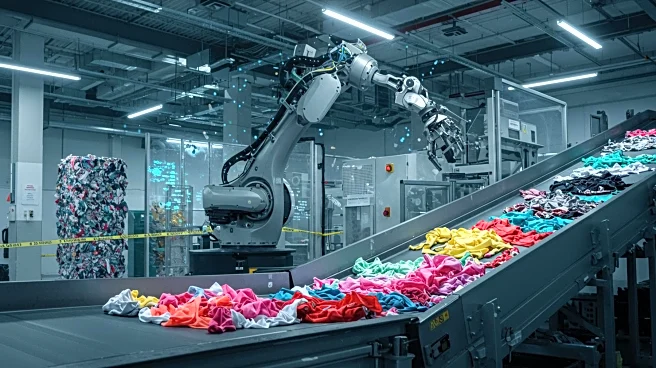What is the story about?
What's Happening?
Researchers at the Rochester Institute of Technology's Golisano Institute for Sustainability have developed an AI-and laser-powered system to improve textile recycling. The prototype can identify, sort, and disassemble garments every 10 seconds, addressing the challenge of mixed material blends and non-recyclable components like zippers and buttons. The system uses near-infrared camera systems and AI to detect hidden materials within fabrics, enabling higher-value material recovery. The project, funded by a $1.3 million grant from the Remade Institute, aims to transform post-consumer clothing into high-quality feedstock.
Why It's Important?
Textile waste is a significant environmental issue, with millions of tons generated annually in the U.S. alone. The innovative system developed by RIT could revolutionize the recycling industry by making post-consumer textiles viable for recycling, thus reducing landfill waste and promoting a circular economy. The technology's scalability and potential for real-world application could lead to significant environmental benefits and economic opportunities in the recycling sector.
What's Next?
The system is currently in the pilot phase, with plans to transition to partners for further testing and potential deployment later this year. The technology has attracted interest from global recyclers, indicating a strong potential for widespread adoption. As the system is refined and scaled, it could support the growth of recycling startups and contribute to the development of sustainable manufacturing solutions.
Beyond the Headlines
The advancement in textile recycling technology could have broader implications for the fashion industry, encouraging more sustainable practices and reducing the environmental impact of clothing production. The collaboration with industry leaders like Nike and Goodwill highlights the importance of partnerships in driving innovation and addressing global challenges.
AI Generated Content
Do you find this article useful?















